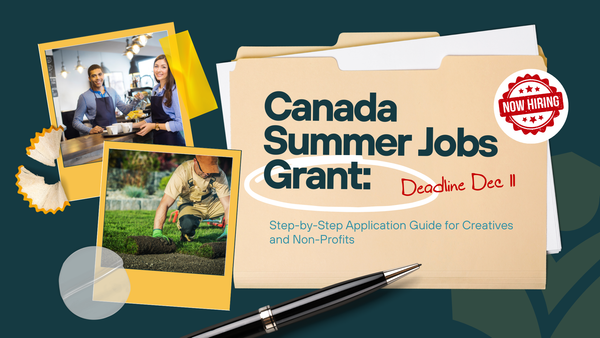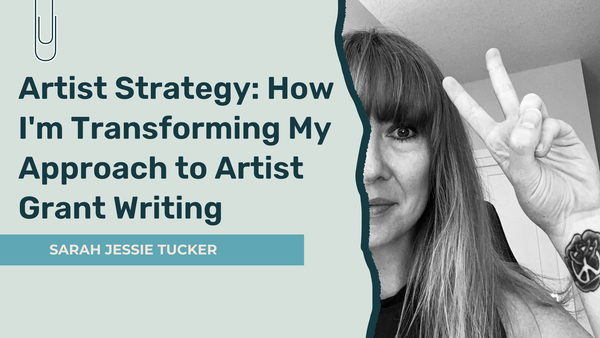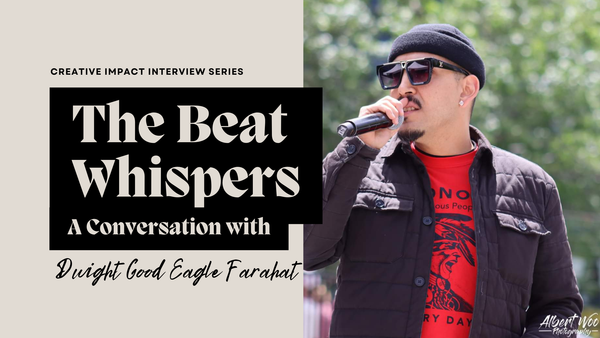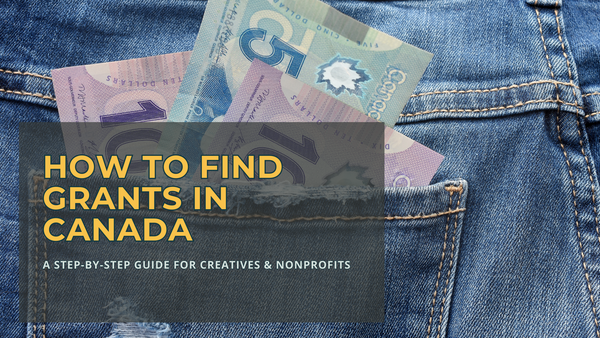Funding Alert: Calgary’s Artist Development Microgrant Explained
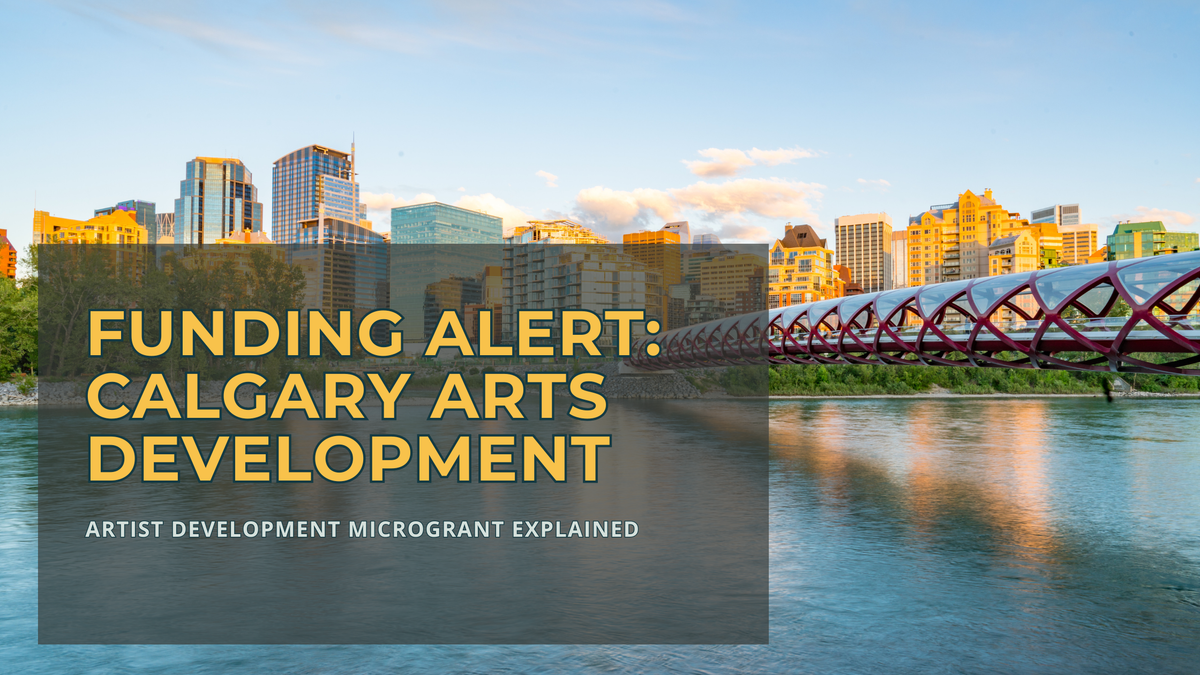
If you’re a Calgary-based artist looking to grow your skills, career, or connections, the Artist Development Microgrant from Calgary Arts Development (CADA) is a must-know opportunity.
This blog post walks you through:
- What the grant is
- Who Calgary Arts Development is
- What you need to apply
- How to build a strong application
Let’s dive in.
🎨 Who is Calgary Arts Development?
Calgary Arts Development (CADA) is the city’s public arts funder. They invest in Calgary’s creative community through grants, advocacy, and community initiatives. Their mission is to foster a resilient and inclusive arts sector where artists, from emerging to established, can thrive.
One of their most accessible programs is the Artist Development Microgrant, offering up to $5,000 to help individual artists, collectives, and cultural workers strengthen their skills, networks, and business capacity.
💡 What is the Artist Development Microgrant?
This grant helps individual artists, artist collectives, and cultural workers develop skills, networks, and business capacity. Think of it as funding to invest in yourself, not to create new art, but to get better at your craft or build your career infrastructure.
You can apply under one of two streams:
- Professional and Artistic Skill Development (e.g., training, mentorships, residencies, workshops)
- Business and Career Development (e.g., branding, marketing, legal/financial training, documentation)
You can request up to $5,000 for eligible activities happening between now and June 30, 2026 (for Intake 2).
📅 2025 Intake 2 - Key Dates
- Applications Open: September 17, 2025
- Deadline: October 15, 2025 at 4:30pm MT
- Results: Late November 2025
- Funds Distributed: December 2025 – January 2026
⚠️ Note: This grant uses a lottery process, so only complete and eligible applications are entered into the draw.
🎲 How the Grant is Awarded: The Lottery Explained
Unlike many grants, which use a scoring and ranking system for applications, this one employs a lottery system. That means all eligible applications are entered into a draw and randomly selected for funding. Initially, I didn’t like this approach, but after some thought, I changed my mind. A lottery process eliminates the potential bias that the assessors bring to their work.
But here’s the key:
💡 Only complete, eligible, and clearly written applications are entered into the lottery. If your application is vague, missing documents, or doesn’t align with program goals, it won’t be considered — no matter how talented you are.
This is where you can improve your odds:
- Make sure your budget is realistic and clear
- Choose the stream that best fits your goals — don’t try to do both
- Provide supporting documents (quotes, confirmation emails, mentor agreements)
- Be specific about who, what, where, when, and why
Think of the lottery as the final step. First, your application needs to pass a basic check for clarity, eligibility, and completeness. That’s entirely in your control.
📝 How to Apply: Step-by-Step
✅ Step 1: Set Up Your Online Profile
Go to the CADA grant portal and create a SmartSimple account.
As part of your profile, you’ll need to upload:
- Artistic Resume or CV: Outline your exhibitions, shows, training, publications, performances, or any relevant experience. (Check out our article on Artist Resumes)
- Artistic Practice Statement (100–300 words): Describe what kind of art you make, how you make it, and why. What drives your practice? What’s important to you? (Check out our article on Artist Statements)
This profile info automatically fills part of your grant application, so keep it up to date!
✅ Step 2: Read the Guidelines and Plan Your Project
Print out the grant guidelines and read them at least three times. Use highlighters to highlight important information and write in the margins to decipher and interpret the guidelines. As you plan your project, keep the guidelines nearby for quick reference. Before applying, be clear about what you want to do. As you plan, consider the following:
- Specific dates
- Where it will happen
- Who’s involved
- What it will cost
Examples:
- A three-month mentorship with a sound engineer
- Attending a marketing course for visual artists
- Hiring a graphic designer to build your portfolio website
- Travel to an industry networking event or artist residency
CADA requires details; vague plans or “maybe” ideas won’t make it through the lottery process.
✅ Step 3: Fill Out the Application
Once logged in, go to “Open Opportunities” and find the Artist Development Microgrant. You’ll be asked to complete:
- Brief Summary (25 words)
- Funding Request (max $5,000)
- Project Dates
- Discipline & Stream (choose 1: Skill Development OR Business Development)
Then answer two key questions:
- What are you doing? Be specific about activities, timelines, and people involved (max 300 words).
- Why is it important now? Explain how this grant supports your goals at this point in your career (max 300 words).
✅ Step 4: Build Your Budget
Include all related costs such as:
- Course fees
- Mentor or consultant fees
- Travel, accommodation, per diem
- Marketing, web design, documentation
- Accessibility supports (e.g., ASL interpretation)
🧾 Include documentation: quotes, confirmations, letters of invitation or support. If you’re working with a mentor or consultant, get a written agreement that outlines scope, dates, and pay.
✅ Step 5: Submit by October 15
Time to submit your application. Plan to submit the day before the deadline to avoid any tech issues. Cut and paste your answers into the grant portal. Save your work regularly in the portal and hit “Submit” before the 4:30 pm MT deadline. Late applications are not accepted.
🎯 Final Tips
- You don’t need to be a full-time artist — just actively pursuing your practice and connected to Calgary’s arts community.
- Permanent residency or citizenship is not required. You do need a Canadian SIN or ITN to report the grant to the CRA.
- The grant is not for creating new art (shows, exhibitions, albums, etc.). It's for growing your skills or career infrastructure.
Be the first to know a new article has gone live by subscribing to Life Café at https://life-cafe.sjtwriting.ca/.
